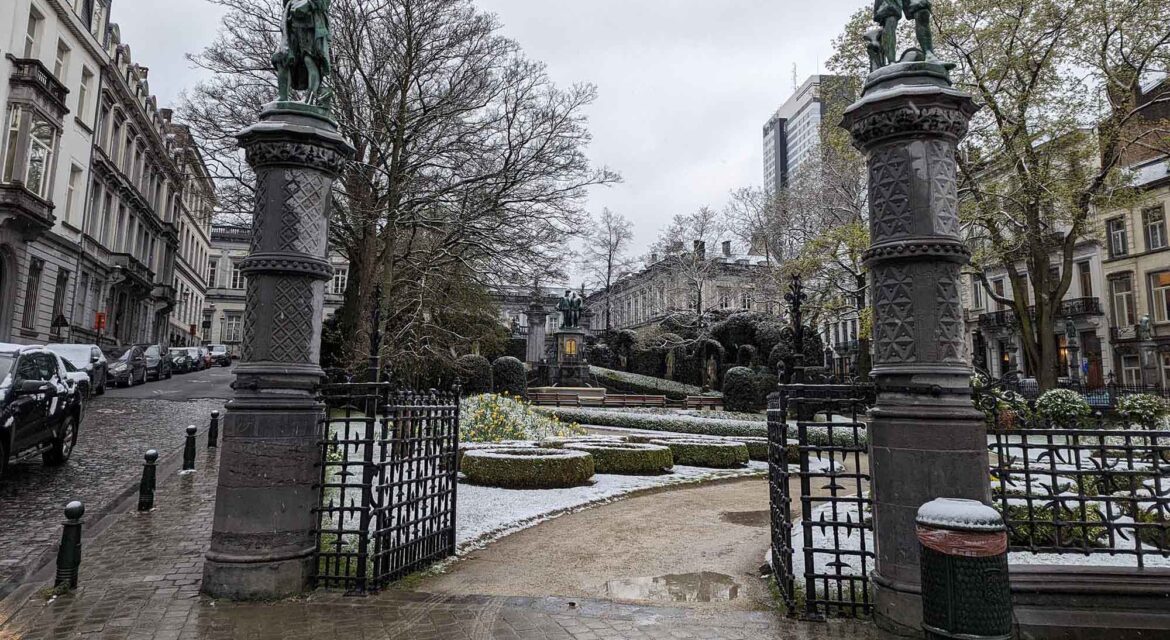 Mentioned as one of the architectural jewels in the heart of Brussels, Petit Sablon Square is a small garden that is filled with sculptures from some of the most notable Belgian artists of the 19th century. Imagining a new identity for what was otherwise just another bland urban development in the capital of Belgium has allowed Petit Sablon Square to cultivate attention from audiences across the eras.
Mentioned as one of the architectural jewels in the heart of Brussels, Petit Sablon Square is a small garden that is filled with sculptures from some of the most notable Belgian artists of the 19th century. Imagining a new identity for what was otherwise just another bland urban development in the capital of Belgium has allowed Petit Sablon Square to cultivate attention from audiences across the eras.

Statues that Represent Various Professional Trade Guilds
 In 1880, the Mayor of Brussels recommended changes to the Sablon neighborhood that were designed to reimagine the setting as something more than a collection of buildings and concrete. This began an effort to totally transform the square into a garden that was opened to the public in 1890. Designed by architect Henri Beyaert, a total of 59 statues define Petit Sablon Square, which is also called Place du Petit Sablon.
In 1880, the Mayor of Brussels recommended changes to the Sablon neighborhood that were designed to reimagine the setting as something more than a collection of buildings and concrete. This began an effort to totally transform the square into a garden that was opened to the public in 1890. Designed by architect Henri Beyaert, a total of 59 statues define Petit Sablon Square, which is also called Place du Petit Sablon.
Petit Sablon Square is decorated with 48 statues symbolizing medieval guilds along with a central fountain that features the figures of the Count of Egmont and Count of Horn. Both were beheaded for their resistance to the Spanish in the 1500s. These 48 statues represent various professional trade guilds of the time, ranging from bakers to cobblers to weavers to gilders. There are also 10 statues that highlight Belgium’s most celebrated scholars and humanists, such as Mercator, Abraham Ortelius and Louis Van Bodeghem. Maps and guides help audiences get a sense of the cultural significance and historical context of each figure.
Petit Sablon Square itself is laid out as a neo-Renaissance-style garden, allowing audiences to experience the natural beauty of the landscape. Interspersed with the sculptures, audiences can get a sense of history while also relaxing on the grass or partaking in an event.
The effort to reimagine the urban center of Brussels into something that showcased the legacy of the entire nation changed the space and city for the better. In doing so, Petit Sablon Square has been able to connect with audiences in ways that continue to resonate and evolve.

A Hidden Gem of Brussels
 Mentioned as a hidden gem of Brussels, Petit Sablon Square highlights the imaginative spirit that can transform a space in ways that connect people and entire nations. Imagining something more for an otherwise banal urban space has changed the look and feel of Brussels to the benefit of audiences across the eras.
Mentioned as a hidden gem of Brussels, Petit Sablon Square highlights the imaginative spirit that can transform a space in ways that connect people and entire nations. Imagining something more for an otherwise banal urban space has changed the look and feel of Brussels to the benefit of audiences across the eras.

